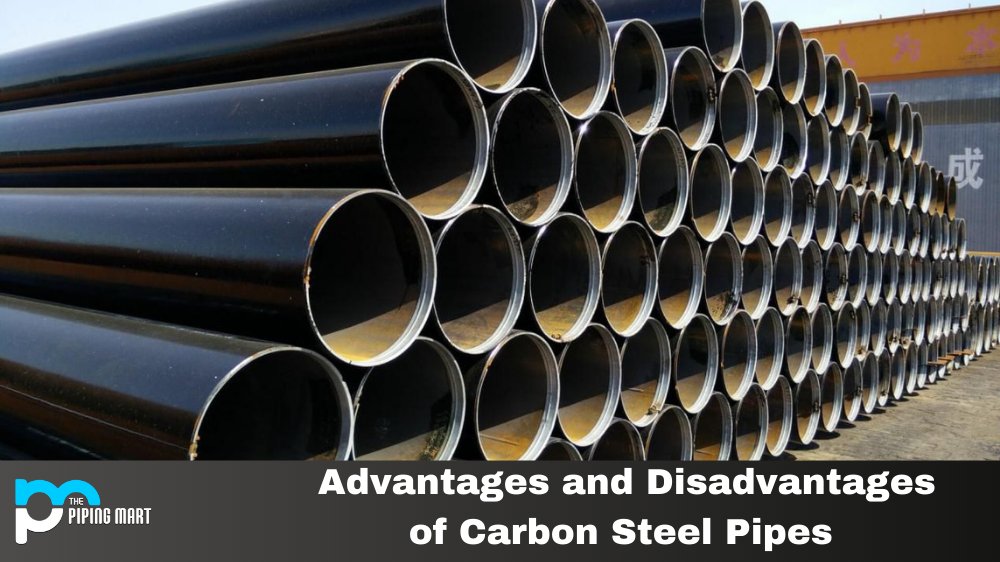Carbon steel pipes are a popular choice for construction projects due to their durability and cost-effectiveness. However, there are both advantages and disadvantages when deciding whether to use carbon steel pipes. Let’s take a closer look at what these are.
5 Advantages of Carbon Steel Pipes
The main advantage of using carbon steel pipes is their strength. They can easily withstand extreme weather, temperatures, and pressures without corroding or cracking. This makes them ideal for outdoor applications such as pipelines and plumbing systems. Additionally, they require minimal maintenance over time due to their durable nature making them an economical option in the long run.
Another benefit of using carbon steel pipes is that they are lightweight, allowing easy installation in areas with limited space. Their flexibility also ensures smooth installation as well as easier transportation from one place to another during construction projects. Additionally, they can be customized according to the specific needs of a project since there is a wide variety of sizes available on the market today.
- Carbon steel pipes are more durable than other types of pipes.
- Carbon steel pipes can withstand high temperatures and pressures.
- Carbon steel pipes do not corrode as easily as other types of pipes.
- Carbon steel pipes are easy to install.
- Carbon steel pipes are available in a variety of sizes.
5 Disadvantages of Carbon Steel Pipes
One disadvantage of carbon steel pipes is their susceptibility to rusting if exposed to moisture or acidic environments over time. This can lead to corrosion which weakens the structural integrity of the pipe itself, ultimately leading to leakage or even complete failure depending on the severity of the rust damage sustained. To reduce this risk it is important to ensure proper maintenance including regular inspection and coating applications when necessary.
Another downside of carbon steel pipes is that they can be expensive due to the materials used in their production process and labor costs associated with installation and maintenance tasks involved with them over time. Additionally, their weight can put additional strain on existing structures if not properly supported correctly before installation, leading to additional costs associated with reinforcement measures and potential delays in project timelines due to unforeseen issues arising from inadequate planning prior execution stages. 1.
Vulnerability to Corrosion
One of the primary disadvantages of carbon steel pipes is that they are vulnerable to corrosion. This is because carbon steel pipes are made of iron, which is a naturally reactive metal. When iron is exposed to oxygen and water, it forms a substance known as rust. Rust can cause the pipe to become weak and eventually break.
Susceptible to Temperature Changes
Another disadvantage of carbon steel pipes is that they are susceptible to temperature changes. This means the pipe can become brittle and break if exposed to extreme cold or heat. This can be a problem in areas where the climate is unpredictable or where the temperature fluctuates frequently.
It Can Be Difficult to Install
Another issue with carbon steel pipes is that they can be difficult to install. This is because the pipes are heavy and need to be supported properly to prevent them from breaking. Additionally, carbon steel pipes are less flexible than other types of pipes, so they may not be able to fit into some spaces.
Not as Durable as Other Materials
While carbon steel pipes are strong, they are not as durable as some other materials, such as stainless steel or copper. This means that they may last less long and may need to be replaced more often. Carbon steel pipes can be damaged more quickly than other types of pipes.
Can Be Noisy
Finally, another disadvantage of carbon steel pipes is that they can be quite noisy when water flows through them. This noise can be disruptive and may even cause damage to nearby buildings or homes.
Conclusion
All in all, home owners and construction professionals need to consider both advantages and disadvantages when making decisions regarding the material used for any project, including those involving carbon steel pipes. While they have many benefits such as strength, durability, flexibility, customization options, low maintenance requirements, etc., it is important to keep in mind potential drawbacks such as rusting concerns or higher-than-average price points associated with them so that informed decisions can be made without sacrificing quality or safety standards while still remaining within budget parameters set forth by clients/stakeholders involved with each respective project at hand.

Abhishek is a seasoned blogger and industry expert, sharing his insights and knowledge on various topics. With his research, Abhishek offers valuable insights and tips for professionals and enthusiasts. Follow him for expert advice on the latest trends and developments in the metal industry.




